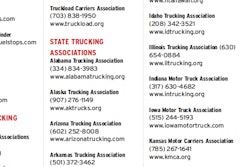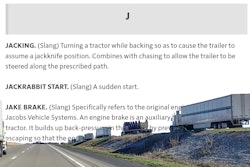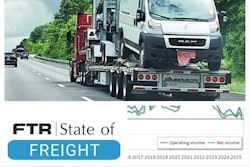As your business gets established, work a weekly or monthly retirement savings contribution, however modest, into your budget. Retirement isn’t something many want to think about, but thinking about it -- and planning for it -- is a must.
Retirement saving is critical now that you’re self-employed and ineligible for any employer-funded retirement plan. If there’s any one thing most seasoned owner-operators featured in Overdrive’s Trucker of the Year program recommend in common to new and/or aspiring owners, it’s the necessity of saving -- and starting as early as possible.
Too many neglect retirement savings early in their careers and, once the benefit of gathered investments is realized, come to regret it mightily.
If you maintain your current spending and savings habits, will you have enough money to retire comfortably? A U.S. Department of Labor study found that Social Security will replace only about 40% of pre-retirement income for the average American. Yet experts say that after you retire, you’ll need about 70% of the income you earned before retirement to maintain your lifestyle.
Although it’s never too late to save for retirement, the sooner you begin, the better, even if it’s only $25 a week. The earlier you invest, the more time your money has to grow.

If a 25-year-old puts $400 into a retirement fund every month until he reaches age 65, and his money grows 10% a year, he will retire with almost $2.5 million. If a 35-year-old invests the same amount each month and earns 10%, he will have just a little more than $900,000 at age 65.
[Related: Investment diligence over 35 years has Trucker of the Month on path to profitable retirement]
Ways to approach Social Security
You have a choice to begin receiving Social Security benefits early (age 62), at full retirement age (age 66 if you were born between 1943 and 1959, at 67 if 1960 and after), or later.
Say you’re 62, with a working income of about $51,000 averaged over enough years to qualify. You would be eligible for $1,050 a month now or $1,393 a month at age 66. If you start now, you will have collected $50,400 by age 66. If you start at 66, you’ll need to live through age 78.5 to make up for the benefits you missed by waiting.
But beyond that age, the higher payments will give you a higher net yield versus starting at 62. If you delay collecting Social Security until age 67, you’ll get 108% of your full retirement (age 66) benefit. That increases each year you wait until age 70, when you get 132% of your full retirement benefit. Increases stop after age 70.
Don't bet solely on your equipment's sale for the retirement nest egg
In an owner-operator’s world, hanging up the saddle and retiring is synonymous with selling the truck and saying goodbye to the open road. The best of the best plan decades in advance to enjoy a long retirement with all their needs met, but best-laid plans often enough go awry.
With used-truck, home and stocks values all fluctuating wildly over the last few years, it’s shaky ground: Recent Overdrive polling showed nearly half of respondents didn’t feel adequately prepped for retirement. Trucks depreciate, health depreciates, but investments over time grow and can build real wealth. Even if you don’t have 40 years to watch your investments mature, there’s still hope, and plenty you can do to make your money work for you.
While selling a truck can represent a large payday -- depending on market conditions and investments made in improvements to the rig -- it’s not likely to be sufficient as a nest egg for your retirement years, not to mention the tax burden.
Ultimately, retirement is like work in that you’ll get out what you put in. Being a smart, disciplined owner-operator can yield tremendous, legacy-building results over time, but if you’re behind the curve on savings, there’s still time.
Read next: Qualified retirement plans: Know your options to maximize returns











